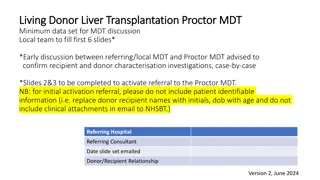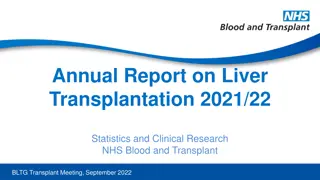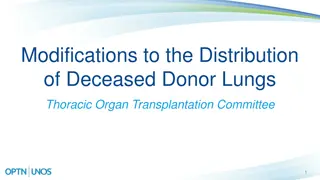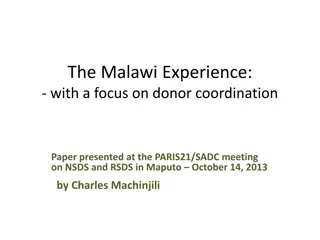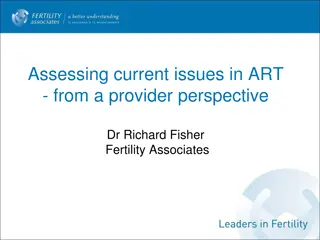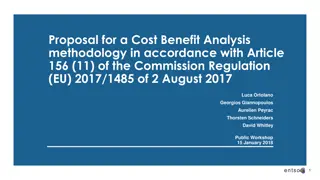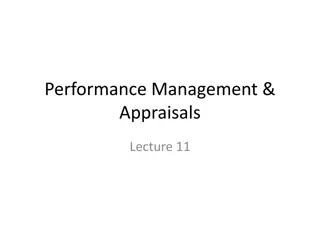Understanding QuODA: A Methodology for Assessing Donor Performance
QuODA is a methodology developed by the Brookings Institution and the Center for Global Development to measure donors' performance in official development assistance. It evaluates aid quality across four dimensions: Ownership, Alignment, Mutual accountability, and Maximizing efficiency. By using indicators and readily available data, QuODA aims to enhance aid effectiveness and transparency, contributing to better development outcomes.
Download Presentation

Please find below an Image/Link to download the presentation.
The content on the website is provided AS IS for your information and personal use only. It may not be sold, licensed, or shared on other websites without obtaining consent from the author. Download presentation by click this link. If you encounter any issues during the download, it is possible that the publisher has removed the file from their server.
E N D
Presentation Transcript
What is "QuODA"? A methodology to measure donors' performance, developed by the Brookings Institution and the Center for Global Development Expressed through a single index across four dimensions of aid quality, adapted from the Paris principles For each dimension, 7-8 indicators, each getting a score, weighted to get the final score for the dimension Uses readily available data from the OECD s Creditor Reporting System (CRS) database and the Survey on Monitoring the Paris Declaration. Paris Declaration principle QuODA dimension Results Ownership Alignment Mutual accountability Maximizing efficiency Fostering institutions Reducing burden Transparency and learning Purpose: assessment of the quality of official development assistance; (an adaption for health aid also developed) Coverage: data for 23 donor countries and more than 100 aid agencies
Methodology issues Main drive: to include elements of aid quality, such as for example perceptions of recipient countries Indicators are cardinal, not ranking assess progress over time Definition of aid: Country Programmable Aid (CPA)from OECD/DAC: total amount of aid that can be programmed by the donor at the recipient country level, with some specific exceptions Source of data: OECD Creditor Reporting System (CRS) AidData OECD Survey on monitoring the Paris Declaration (2008) World Bank Aid Effectiveness Review (2007) DAC Report on Aid Predictability (2009) Gallup organization 2008 World Bank group Global Poll World Values Survey (www.worldvaluessurvey.org) Latino, Euro, Asian and Afro barometer surveys Index of governance vulnerability UN National Accounts main aggregate database IMF World Economic Outlook OECD s Creditor Reporting System (CRS) The authoritative source of annual activity-level statistical information on Official Development Assistance (ODA), other official flows (OOF), and some private aid flows from the 24 OECD DAC members. It is maintained by OECD/DAC and contains information on the aid activities of many major multilateral organizations and several other non-DAC donors that is collected directly from these organizations. AidData is a collaborative initiative to provide products and services that promote the dissemination, analysis, and understanding of development finance information. At the core of the AidData program is the AidData web portal, which is a gateway to nearly one million past and present records of development finance activities from donors around the world. Complementing the work of the OECD, it is not an official source of data for any one or group of donors;
Four dimensions and 30 indicators of QuODA Maximizing efficiency Share of allocation to poor countries a Fostering institutions Share of aid to recipients top development priorities a,b Reducing burden Significance of aid relationships a Transparency and learning Member of International Aid Transparency Initiative a Share of allocation to well- governed countries c Avoidance of project implementation units b,c Fragmentation across agencies c Recording of project title and descriptions Low administrative unit costs a Share of aid recorded in recipient budgets b,c Median project size a b Detail of project descriptions High country programmable aid share a Share of aid to partners with good operational strategies a Contribution to multilaterals a Reporting of aid delivery channel Focus/specialization by recipient country a,c Use of recipient country systems b,c Coordinated missions b,c Share of projects reporting disbursements Focus/specialization by sector a,c Coordination of technical cooperation b,c Coordinated analytical work b,c Completeness of project- level commitment data b Support of select global public good facilities a Share of scheduled aid recorded as received by recipients b,c Use of programmatic aid b,c Aid to partners with good monitoring and evaluation frameworks a Share of untied aid b,c Coverage of forward spending plans/Aid predictability a,b Note: The 30 indicators are flagged by the type of source that advocates for their use as a benchmark: a. Academic literature. b. Recipient governments. c. Paris Declaration.
Source: Glassman A, Duran D. Quantifying the Quality of Health Aid: Health QuODA. CGD Brief, May 2012



